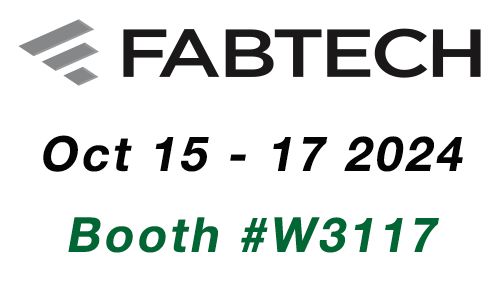Dust Collection Keeps Concrete Workers Safe
Key Points
- Beginning on September 23, 2017, new OSHA regulations will require contractors to adopt additional procedures to shield workers from airborne silica exposure.
- Proper collection of concrete dust at the source is the best way to protect workers.
- Dust-free power tools and dust collection vacuums are the most reliable and efficient systems that contractors can use to prevent concrete dust on jobsites.
Ongoing exposure to airborne silica dust can pose significant health hazards, and over time, it can even prove fatal. To increase concrete worker safety on construction sites, the Occupational Safety and Health Administration (OSHA) is instituting more stringent concrete dust collection regulations. Proper containment of silica-containing concrete dust is one of the most important safety precautions that employers can take to protect their workers.
Silica Dust Hazards
Silica dust has been classified as carcinogenic, and multiple studies have demonstrated the dangers associated with long-term exposure. Researchers have identified a connection between the inhalation of silica particles found in concrete dust and the later development of multiple respiratory conditions, including chronic obstructive pulmonary disease (COPD), emphysema, chronic bronchitis, and non-reversible asthma. Other adverse effects of silica particles on the human body include lung cancer and silicosis – the development of small lesions on lung tissue, which severely restricts the absorption of oxygen.
Armed with multiple studies and supporting evidence, OSHA has developed new regulations to protect concrete workers from silica dust. Beginning September 23, 2017, these new OSHA rules will require contractors to adopt additional procedures to measure silica dust levels, mitigate dust on the jobsite and shield workers from exposure to airborne silica. OSHA’s silica dust regulation states that dust collection vacuums must contain a filter with 99.00% filtration efficacy or better.
Silica Dust Control and Best Practices
The right silica dust collection system can dramatically improve concrete worker safety and jobsite air quality. The best tools for safe concrete dust collection include specialized vacuums and vacuum-assisted power tools that dramatically reduce the potential hazard at the source.
Silica dust collection vacuums work best when workers are properly trained and use the best industry-accepted practices:
- Keep the vacuum hose clear and free of debris, tight bends, and kinks.
- If the vacuum is not self-cleaning, turn it on and off to minimize filter dust build up.
- Change any vacuum-collection bags when needed.
- Set up regular filter maintenance and cleaning schedules.
- Avoid silica dust exposure when changing vacuum bags, cleaning the equipment, or replacing air filters.
Wet Silica Dust Collection / Dust Suppression
In addition to using vacuums to remove concrete dust, proper cutting methods and tools can make a major impact in the prevention of airborne silica dust. Recent studies have shown that wet concrete cutting can drastically reduce the levels of respirable silica dust in a worker’s environment. Water-fed control equipment is useful in cutting concrete without dust, and it is especially helpful in the grinding and polishing of concrete, as well as the cutting of materials with abrasive wheels.
Wet grinding tools and saws use a constant supply of water to grind and cut. These tools may include a spout or nozzle that directs a jet of water to the grinding wheel, or a helper can apply water by hand with a spray nozzle. Water-fed grinders can provide concrete dust control on uneven surfaces and around edges and corners, which pose problems for vacuum dust collection equipment.
Work Practice Adjustments to Reduce Silica Dust Exposure
There are many steps that contractors can take to reduce concrete dust exposure and to keep employees safe:
- Use a smaller cutting wheel and the least aggressive tool for the job. Large and aggressive wheels tend to result in more dust and higher silica exposure rates.
- Minimize the amount of fine grinding. For example, when materials are removed by chipping instead of grinding, less dust is created. Use a chisel, hammer, or power chipping tool to remove as much material as possible before using a grinder for surface smoothing.
- Require respiratory protection. If wet grinding isn’t an option and silica exposures can’t be reduced within OSHA’s permissible exposure limit, construction workers will need proper respiratory protection. If respirators are required, employers must implement a respiratory protection program in accordance with OSHA’s standard for respiratory protection. It must include the following:
- Proper respirator selection
- Fit testing
- Directions on proper respirator use, maintenance, and cleaning
- Medical evaluations of construction workers
- Training
- Prioritize electrical safety. Use ground-fault circuit interrupters (GFCIs) and watertight electrical connectors for electric tools and equipment used on construction sites. These safety features are highly important in wet or damp areas, including sites where water is used to control dust.
CS Unitec offers a variety of concrete dust control tools for sawing, drilling, surface preparation, and drilling applications. The use of these tools with our custom vacuums creates a concrete cutting system with minimal silica dust exposure. Our standard dust collection vacuums have a 99.9930% filtration efficiency, meanwhile, our HEPA vacuums have a 99.999% filtration efficiency; both above OSHA’s required filtration efficiency.
It is each company's responsibility to follow all OSHA, state and local safety regulations regarding the choice, operation and maintenance of power tools and dust collection/suppression systems. This includes tools and systems used when working with materials containing crystalline silica. For more information about OSHA's silica dust collection guidelines and regulations, visit the links below:
Call CS Unitec today at 800-700-5919 to discuss your concrete dust containment needs or to get more information about OSHA’s silica dust regulations going into effect on September 23rd, 2017.
 Urgent Weekend/Holiday Fulfillment Available - Click For Details
Urgent Weekend/Holiday Fulfillment Available - Click For Details 




